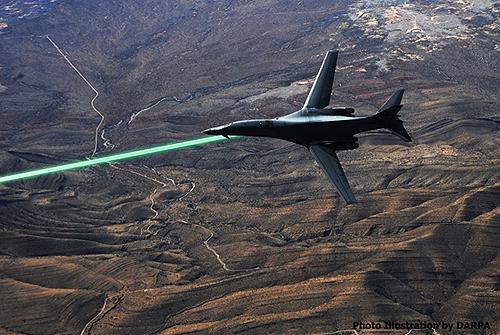Tail Turret Tale

Photo courtesy of globalaviationreport.com Sadly, this isn’t what it’s going to look like.
October 2, 2014
During the age of subsonic aircraft and Indiana Jones (“They got us, son”), the tail turret was a wonderful idea; after all, who could fly fast enough to dodge a bullet? It was incredibly successful in aerial dogfights. Fast forward a few years, and people discovered that tail turrets aren’t that effective against missiles. And that thing about flying faster than a bullet? Yeah, we can do that now. The last time a tail turret was used was in the Vietnam War, on the U.S. plane the Stratofortress (yes, the idea was a “flying fortress”). And the Stratofortress wasn’t even decommissioned, just the tail turret. Later models are still being used around the world today.
However, Lockheed and DARPA (Defense Advanced Research Projects Agency) want to bring back the tail turret with a 21st century spin: they’re going to be laser turrets. Named the Aero-adaptive Aero-optic Beam Control, or ABC for short (though one has to wonder how long a team of scientists sat there coming up with a name whose acronym was ABC), the high energy laser weapon has 360-degree coverage. The aim of this flexibility and power is to defend against missiles. Specifically, controls and cameras in the turret ensure a constant lock-on onto enemy missiles while the laser fries its electronics. Like nuking a phone in a microwave, but in the air, and moving at roughly 600 miles per hour. Lockheed’s innovations, such as its flow control and optical compensation technologies, help ensure that an equipped plane will be able to fly normally, even with the turbulence caused by having a turret jut out from the body of the plane.
Lockheed has announced that a converted commercial jet with an attached ABC laser made eight successful flights over Michigan, proving the turret’s airworthiness.
A big draw for anti-missile systems on planes is the recent airplane crash in Ukraine. Malaysian Airlines flight 17 was downed over Ukraine by surface-to-air missiles. Devices like the ABC turret could help prevent such a disaster in the future, disabling the missile before it could reach the plane. Such devices would also help prevent monetary losses, as installing a new system onto a plane is much cheaper than redesigning an old one or building a new one.
So while we won’t be getting spaceships fighting in the upper orbits of Earth with laser cannons, we can still rest easy knowing that, soon, every flight we take will be that much safer.



















